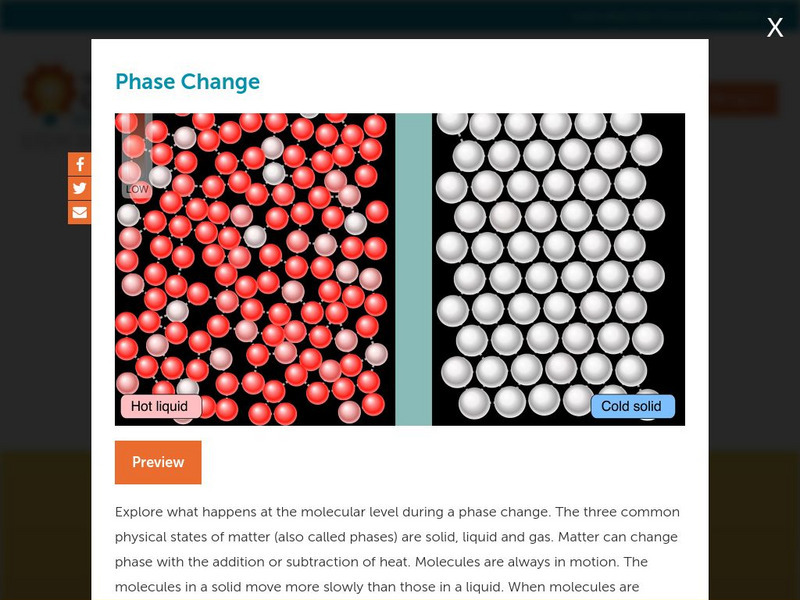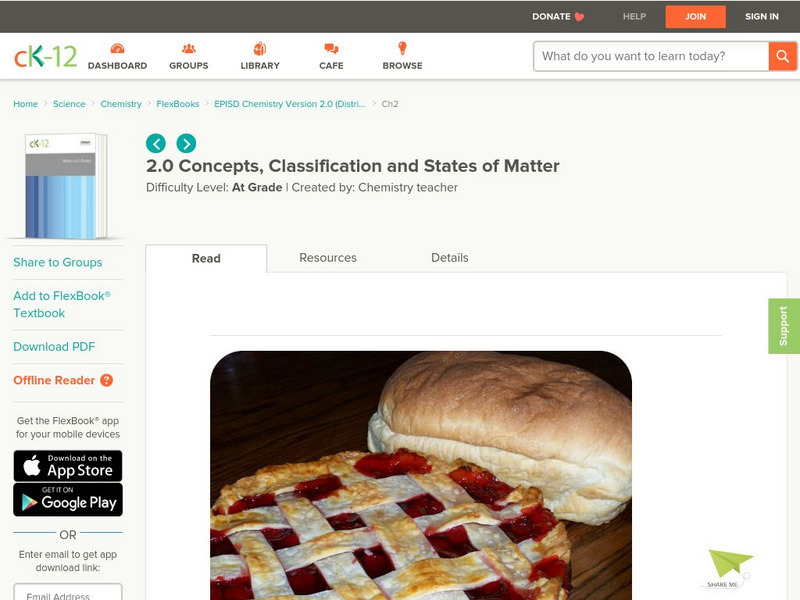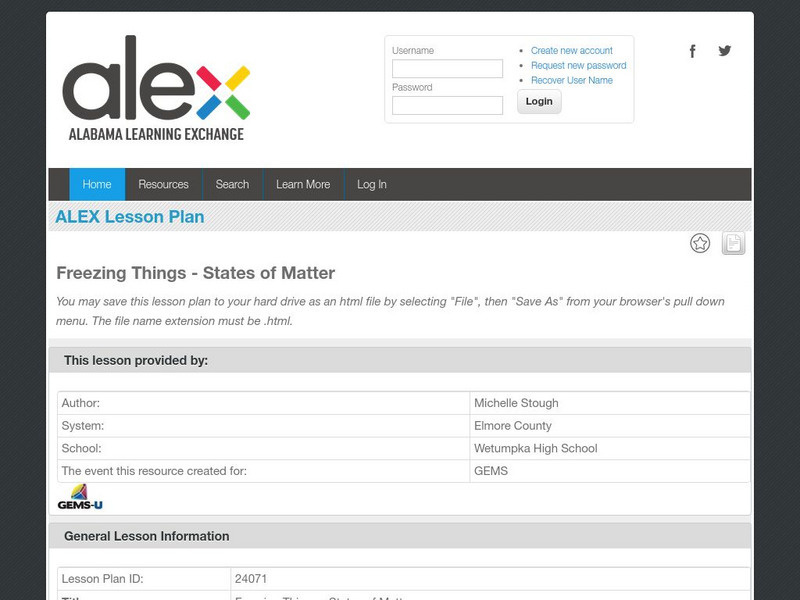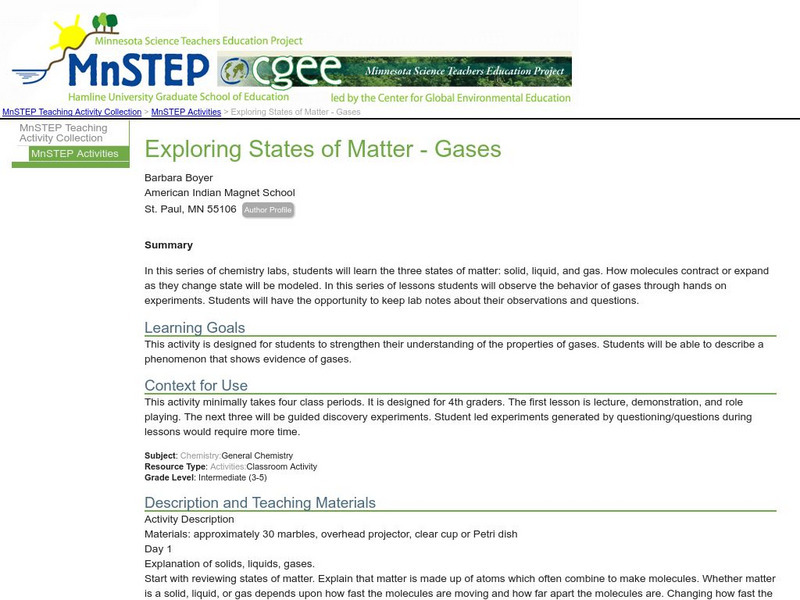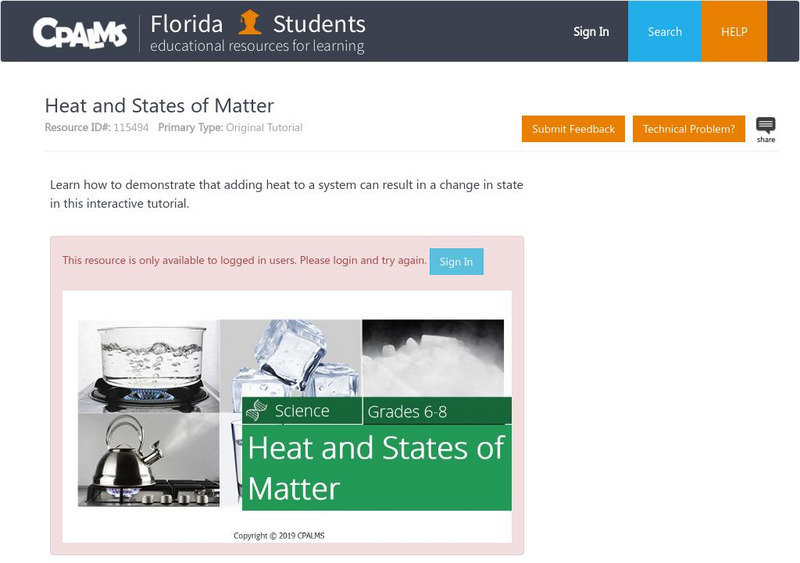Hi, what do you want to do?
Curated OER
Color Me Hot
Seventh graders use the scientific method, to observe, record and analyze the data they gathered. They make observations using their five senses. Students compare, contrast and draw conclusions based on the observations and data...
Curated OER
Birthdays
Young scholars recognize that there are different birthday customs unique to many countries.
Curated OER
What Do You Say... Psa Part One
Students investigate the differences between advertisements and public service announcements. They monitor their own reactions to educational messages as they pertain to warning about specific dangers and apply this to target audiences.
Curated OER
Studying with Chemical Compounds
Young scholars create a foldable to help them remember topics on chemical compounds. In this physical science lesson, students differentiate ionic and covalent compounds. Given certain compounds, they identify whether it's ionic or...
Curated OER
Dam-it? I Just Don't Know!?!
Eighth graders analyze two different large dams: The Hoover Dam and the Three Gorges Dam. They compare and contrast the two dams.
Curated OER
Air: You Can't See It, But It's There!
First graders investigate that air occupies space by performing experiments that show this principle. Students are provided with a lunch bag. Students open the lunch bag and look inside. Students determine if there is anything in their...
Curated OER
What Is The Challenge? Manet
Students create a contemporary presentation in which they internalize the information concerning Manet.
Concord Consortium
Concord Consortium: Stem Resources: Phase Changes
This activity reviews of states of matter, then relates them to atomic movement as it is affected by attractions between atoms and the addition of energy. Latent heat and evaporative cooling are also topics covered. Multiple-choice and...
eSchool Today
E School Today: What Is Matter
Learn about matter, its three states, changes of state, how matter behaves, and physical and chemical changes in matter.
Science Education Resource Center at Carleton College
Serc: Changing the State of Matter Using Heating and Cooling
In this lesson, students will investigate how different materials changed when heated or cooled. The process in developing the investigation will be inquiry based. Students will have the liberty in choosing the materials and devising how...
CK-12 Foundation
Ck 12: Concepts, Classification and States of Matter
[Free Registration/Login may be required to access all resource tools.] Freshly baked bread and cherry pie are two delicious parts of any meal. What happens to the ingredients that go into the bread and the pie as they are heated in the...
American Chemical Society
Middle School Chemistry: Chapter 2: Changes of State
Five chemistry lessons about phase changes between the states of mattter complete with handouts and animations.
Better Lesson
Better Lesson: Changing Matter:changing Matter: Is Weight the Same or Different?
Students conduct a hands-on investigation to determine how matter, changing state, effects the property of weight. Students will collect data and graph their results. Resources include step by step instructions, a data worksheet, videos...
Children's Museum
The Children's Museum of Indianapolis: Color Changing Milk
Students observe a molecular dance of bursting colors through exploring states of matter and learning that materials can be characterize by how they respond to water.
Alabama Learning Exchange
Alex: Freezing Things: States of Matter
The class will go back over the Power Point presentation on chemical and physical properties. The teacher will then conduct numerous liquid nitrogen demos. This instructional activity is used early in the Chemistry course. The students...
American Chemical Society
Middle School Chemistry: Changing State: Evaporation
Students build a model of a water molecule and design an experiment to see if adding energy affects the rate of evaporation.
Science Education Resource Center at Carleton College
Serc: Exploring States of Matter Gases
In this series of chemistry labs, students learn about the three states of matter by observing how molecules contract or expand as they change state.
CPALMS
Florida State University Cpalms: Florida Students: Heat and States of Matter
Learn how states of matter can change as heat is added to a system.
Science Education Resource Center at Carleton College
Serc: Investigating Changes of State: Chemical and Physical Changes
In this chemistry lab, students will investigate, observe, and describe a variety of chemical and physical changes in matter. They will understand that this is part of everyday life.
Chem4kids
Chem4 Kids: States of Matter
This resource explains the five states of matter and methods of changing from one state to another.
Concord Consortium
Concord Consortium: Molecular Workbench: States of Matter
Change variables in this simulation to see how compression affects different states of matter.
Science Education Resource Center at Carleton College
Serc: Observing the Effect of Temperature on Change of State and Gas Pressure
This lab serves as a short introduction to both changes in state and air pressure/the gas laws. The students will heat a small amount of water in an aluminum can. They will then invert it in a bucket of cold water and crush the can using...
American Chemical Society
Middle School Chemistry: Changing State: Freezing
Students investigate how low temperature causes water vapor to condense into a liquid and then freeze to form a solid.
McREL International
Mc Rel International: Timss 2007 Released Items: Science Fourth Grade [Pdf]
A released question from the Trends in International Mathematics and Science Study (TIMSS) assessment about change of states of matter. Also included is a scoring guide for the released question.












